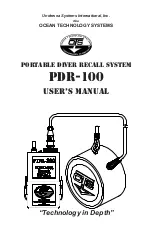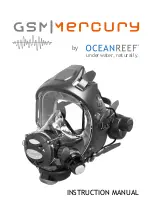
Appendix E. Factors that Affect Turbidity and Suspended-Sediment Measurements
E-2
shows the difference in apparent turbidity that can result from
different ways of disaggregating sediment.
FIGURE E-2. The apparent change in turbidity resulting from
disaggregation methods
E.2 Suspensions with Mud and Sand
As mentioned in Appendix
(p. E-1)
, light scattering from
particles is inversely related to particle size on a mass concentration basis. This
can lead to serious difficulties in flow regimes where particle size varies with
time. For example, when sandy mud goes through a cycle of suspension and
deposition during a storm, the ratio of sand to mud in suspension will change.
A turbidity sensor calibrated for a fixed ratio of sand to mud will, therefore,
indicate the correct concentration only part of the time. There are no simple
remedies for this problem. One solution is to take many water samples and
analyze them in the laboratory; however this is not always practical during
storms when the errors are likely to be largest. Do not rely solely on turbidity
sensors to monitor suspended-sediment particles when particle size or
composition is expected to change with time at a monitoring site.
E.3 Particle-Shape Effects
In addition to size and flocculation/aggregation, particle shape has a significant
effect on the scattering intensity from a sample and calibration slope of a
turbidity sensor. As the graph in FIGURE
(clay-mineral particles, for example) backscatter light about ten times more
efficiently than spherical particles, while angular shapes have intermediate
scattering efficiency. Turbidity sensors are very sensitive to shape effects and
this makes it very important to calibrate with material from the monitoring site.
Sonic Probe
(Most Aggressive)
Hand Shaking
(Least Aggressive)
Sonic Bath







































